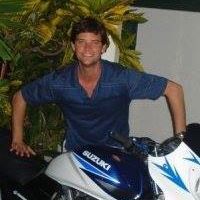Steven C Phelps
age ~76
from Murrieta, CA
- Also known as:
-
- Steven Charles Phelps
- Steve C Phelps
- Steve C Phelp
- Phone and address:
- 31576 Whitecrown Dr, Murrieta, CA 92563
Steven Phelps Phones & Addresses
- 31576 Whitecrown Dr, Murrieta, CA 92563
- Bonsall, CA
- 43605 Corte Cabral, Temecula, CA 92592
- Escondido, CA
- San Marcos, CA
- Pauma Valley, CA
Isbn (Books And Publications)

Art and Artefacts of the Pacific, Africa and the Americas: The James Hooper Collection
view sourceAuthor
Steven Phelps
ISBN #
0091250005
License Records
Steven Cole Phelps
License #:
54070 - Expired
Category:
Nursing Support
Issued Date:
Apr 1, 2005
Effective Date:
Apr 11, 2008
Expiration Date:
Apr 1, 2008
Type:
Medication Aide
Name / Title
Company / Classification
Phones & Addresses
Owner
S PHELPS EXCAVATING
Excavating Contractors
Excavating Contractors
3150 Wilkinson Road, Cobble Hill, BC V0R 1L0
(250)7437567
(250)7437567
Owner
S PHELPS EXCAVATING
Excavating Contractors
Excavating Contractors
(250)7437567
President,Director
BADGLEY, PHELPS & BELL, INC
Owner, Principal
Ballast Point Insurance Services
Insurance Agent/Broker
Insurance Agent/Broker
2251 San Diego Ave, San Diego, CA 92110
3862 5 Ave, San Diego, CA 92103
PO Box 81185, San Diego, CA 92138
(619)5501142
3862 5 Ave, San Diego, CA 92103
PO Box 81185, San Diego, CA 92138
(619)5501142
Us Patents
-
Multiphase Nucleic Acid Amplification
view source -
US Patent:20140066326, Mar 6, 2014
-
Filed:Aug 30, 2013
-
Appl. No.:14/014607
-
Inventors:Lizhong DAI - San Diego CA, US
Steven PHELPS - La Jolla CA, US -
Assignee:GEN-PROBE INCORPORATED - San Diego CA
-
International Classification:C12Q 1/68
C12Q 1/70 -
US Classification:506 9, 435 611, 435 5
-
Abstract:Improved methods for use in nucleic acid amplification, including multiplex amplification, where the amplification is carried out in two or more distinct phases are disclosed. The first phase amplification reaction preferably lacks one or more components required for exponential amplification. The lacking component is subsequently provided in a second, third or further phase(s) of amplification, resulting in a rapid exponential amplification reaction. The multiphase protocol results in faster and more sensitive detection and lower variability at low analyte concentrations. Compositions for carrying out the claimed methods are also disclosed.
-
Multiphase Nucleic Acid Amplification
view source -
US Patent:20210403982, Dec 30, 2021
-
Filed:May 24, 2021
-
Appl. No.:17/328312
-
Inventors:- San Diego CA, US
Lizhong DAI - San Diego CA, US
Steven PHELPS - La Jolla CA, US -
International Classification:C12Q 1/6806
C12Q 1/6848
C12Q 1/70
C12P 19/34
C12Q 1/68
C12Q 1/6865
C12Q 1/6825 -
Abstract:Improved methods for use in nucleic acid amplification, including multiplex amplification, where the amplification is carried out in two or more distinct phases are disclosed. The first phase amplification reaction preferably lacks one or more components required for exponential amplification. The lacking component is subsequently provided in a second, third or further phase(s) of amplification, resulting in a rapid exponential amplification reaction. The multiphase protocol results in faster and more sensitive detection and lower variability at low analyte concentrations. Compositions for carrying out the claimed methods are also disclosed.
-
Reagent Nozzle Sipper Mixing System And Method
view source -
US Patent:20210270708, Sep 2, 2021
-
Filed:May 19, 2021
-
Appl. No.:17/303043
-
Inventors:- San Diego CA, US
Michael Dai Wang - San Diego CA, US
Umberto Ulmanella - San Diego CA, US
James Michael Osmus - San Diego CA, US
Stephen Wayne Clark - San Diego CA, US
Johanna Lynn Whitacre - San Diego CA, US
Steven Scott Phelps - San Diego CA, US
Michelle L. Alvarez - San Diego CA, US
Michael Adalbert Niziolek - San Diego CA, US
Debra Sue Bryan - San Diego CA, US
Joshua Augustin Darland - San Diego CA, US -
Assignee:Illumina, Inc. - San Diego CA
-
International Classification:G01N 1/38
B01L 3/00
G01N 35/10
C12Q 1/6874
B01F 13/10
B01F 15/02
B01F 5/00
B01F 5/06
B01F 3/08
G01N 1/14
B01F 11/00
B01F 15/00 -
Abstract:An analysis instrument may perform analytical operations on an analyte that is combined with multiple reagents prior to being introduced into a flow cell. The instrument may include a nozzle sipper that aspirates reagents from a recipient, along with an analyte. The reagents may be directed to a volume and may be repeatedly moved into and out of the volume by cycling of a pump. The reagents may be ejected into a destination recipient with the nozzle sipper promoting vorticity in the recipient to enhance mixing. The repeated aspiration and ejection through the nozzle sipper effectively mixes the reagents and the template in an automated or semi-automated fashion.
-
Reagent Mixing System And Methods
view source -
US Patent:20210018527, Jan 21, 2021
-
Filed:Oct 2, 2020
-
Appl. No.:17/062288
-
Inventors:- San Diego CA, US
Steven S. Phelps - San Diego CA, US
Bradley Kent Drews - Poway CA, US
Michael A. Niziolek - San Diego CA, US
Joshua A. Darland - Pleasanton CA, US
Umberto Ulmanella - San Diego CA, US
Michael Dai Wang - San Diego CA, US
Michelle L. Alvarez - Encinitas CA, US
Stephen Wayne Clark - San Diego CA, US -
International Classification:G01N 35/10
G01N 35/00
B01L 3/00
B01F 15/02
B01F 5/00
B01F 5/06
B01F 3/08
B01F 13/10
C12Q 1/6874
B01F 15/00
B01L 3/02
B01F 11/00 -
Abstract:A method includes, under control of control circuitry implementing a mixing protocol, aspirating reagents from multiple different reagent reservoirs into a cache channel. Designated amounts of the reagents are automatically aspirated from the corresponding reagent reservoirs by corresponding sippers based on the mixing protocol implemented by the control circuitry. The method also includes discharging the reagents from the cache channel into a mixing reservoir, and mixing the reagents within the mixing reservoir to form a reagent mixture.
-
Reagent Channel Mixing System And Method
view source -
US Patent:20200230598, Jul 23, 2020
-
Filed:Mar 23, 2020
-
Appl. No.:16/827391
-
Inventors:- San Diego CA, US
Michael Dai Wang - San Diego CA, US
Umberto Ulmanella - San Diego CA, US
Stephen Wayne Clark - San Diego CA, US
Johanna Lynn Whitacre - San Diego CA, US
Steven Scott Phelps - San Diego CA, US
Michelle L. Alvarez - San Diego CA, US
Michael Adalbert Niziolek - San Diego CA, US
Debra Sue Bryan - San Diego CA, US
Joshua Augustin Darland - San Diego CA, US -
International Classification:B01L 3/00
G01N 35/10
B01F 15/02
B01F 13/00
B01F 11/00 -
Abstract:An analysis system may perform operations on an analyte that may be combined with multiple regents prior to being introduced into a flow cell. The instrument may include a volume into which the reagents to be combined with the analyte are aspirated one-by-one. The volume may be formed as a serpentine channel in a valve manifold associated with sippers for aspirating the reagents. The reagents may then be mixed by cycling a pump to move the reagents within the mixing volume or channel. For this, the reagents may be aspirated from a recipient into the volume or channel, ejected back into the recipient, and this process may be performed repeatedly to enhance mixing
-
Multiphase Nucleic Acid Amplification
view source -
US Patent:20190185911, Jun 20, 2019
-
Filed:Jan 7, 2019
-
Appl. No.:16/241778
-
Inventors:- San Diego CA, US
Lyle J. ARNOLD - Poway CA, US
Lizhong DAI - San Diego CA, US
Steven PHELPS - La Jolla CA, US -
International Classification:C12Q 1/6806
C12Q 1/6865
C12Q 1/6825
C12Q 1/6848
C12P 19/34
C12Q 1/70
C12Q 1/68 -
Abstract:Improved methods for use in nucleic acid amplification, including multiplex amplification, where the amplification is carried out in two or more distinct phases are disclosed. The first phase amplification reaction preferably lacks one or more components required for exponential amplification. The lacking component is subsequently provided in a second, third or further phase(s) of amplification, resulting in a rapid exponential amplification reaction. The multiphase protocol results in faster and more sensitive detection and lower variability at low analyte concentrations. Compositions for carrying out the claimed methods are also disclosed.
-
Reagent Channel Mixing System And Method
view source -
US Patent:20180185842, Jul 5, 2018
-
Filed:Dec 13, 2017
-
Appl. No.:15/841102
-
Inventors:- San Diego CA, US
Michael Dai Wang - San Diego CA, US
Umberto Ulmanella - San Diego CA, US
Stephen Wayne Clark - San Diego CA, US
Johanna Lynn Whitacre - San Diego CA, US
Steven Scott Phelps - San Diego CA, US
Michelle L. Alvarez - San Diego CA, US
Michael Adalbert Niziolek - San Diego CA, US
Debra Sue Bryan - San Diego CA, US
Joshua Augustin Darland - San Diego CA, US -
International Classification:B01L 3/00
-
Abstract:An analysis system may perform operations on an analyte that may be combined with multiple regents prior to being introduced into a flow cell. The instrument may include a volume into which the reagents to be combined with the analyte are aspirated one-by-one. The volume may be formed as a serpentine channel in a valve manifold associated with sippers for aspirating the reagents. The reagents may then be mixed by cycling a pump to move the reagents within the mixing volume or channel. For this, the reagents may be aspirated from a recipient into the volume or channel, ejected back into the recipient, and this process may be performed repeatedly to enhance mixing
-
Reagent Nozzle Sipper Mixing System And Method
view source -
US Patent:20180188141, Jul 5, 2018
-
Filed:Dec 13, 2017
-
Appl. No.:15/841098
-
Inventors:- San Diego CA, US
Michael Dai Wang - San Diego CA, US
Umberto Ulmanella - San Diego CA, US
James Michael Osmus - San Diego CA, US
Stephen Wayne Clark - San Diego CA, US
Johanna Lynn Whitacre - San Diego CA, US
Steven Scott Phelps - San Diego CA, US
Michelle L. Alvarez - San Diego CA, US
Michael Adalbert Niziolek - San Diego CA, US
Debra Sue Bryan - San Diego CA, US
Joshua Augustin Darland - San Diego CA, US -
International Classification:G01N 1/38
G01N 1/14
B01L 3/00
G01N 35/10
C12Q 1/6874
B01F 13/10
B01F 15/02
B01F 5/00
B01F 5/06
B01F 3/08 -
Abstract:An analysis instrument may perform analytical operations on an analyte that is combined with multiple reagents prior to being introduced into a flow cell. The instrument may include a nozzle sipper that aspirates reagents from a recipient, along with an analyte. The reagents may be directed to a volume and may be repeatedly moved into and out of the volume by cycling of a pump. The reagents may be ejected into a destination recipient with the nozzle sipper promoting vorticity in the recipient to enhance mixing. The repeated aspiration and ejection through the nozzle sipper effectively mixes the reagents and the template in an automated or semi-automated fashion.
Resumes

Steven Phelps
view sourceClassmates

Steven Phelps
view sourceSchools:
Columbiaville High School Columbiaville MI 1997-2000
Community:
Terese Hoffman

Steven Phelps
view sourceSchools:
Campbell Middle School Smyrna GA 1998-2001, Argyle Elementary School Smyrna GA 2001-2005
Community:
Leslie Phillips, Donna Wills, Jimmy Ford

Steven Phelps
view sourceSchools:
Saint Matthew School Baltimore MD 1971-1980
Community:
Neil Dickerson, Pasquale Pat, Bill Mcgraw

Steven Phelps
view sourceSchools:
Whitesboro High School Whitesboro TX 1989-1993
Community:
Felicia Mitchell, Carla Elvington, Karol Boaz, Scott Hodges, Robert Garvin

Steven Phelps
view sourceSchools:
Richmond High School Richmond IN 1968-1972
Community:
William Hayes, Kelley El-Jor

Steven Phelps
view sourceSchools:
Forest Edge Elementary School Reston VA 1975-1978, Bethesda Elementary School Bethesda MD 1979-1979, Our Lady of Lourdes School Bethesda MD 1979-1980, Leland Middle School Bethesda MD 1980-1981
Community:
Jackie Rosales, Mac Yee

Steven Phelps
view sourceSchools:
Walla Walla Valley Academy College Place WA 1983-1987
Community:
Ed Hall, Ardythe Price, Bess Genest, Roland Smith, Jan Hall, Byron Howell
Myspace
Youtube
Flickr

Steven Phelps Sr.
view source
Steven Phelps
view source
Steven M. Phelps
view source
Steven Phelps
view source
Steven Phelps
view source
Steven D Phelps
view source
Steven Phelps Jr
view source
Steven Phelps
view sourceGoogleplus

Steven Phelps
Work:
Cowboys & Indians Magazine - Web Editor (2006)
Texas Lawyer - Photo Editor (2000-2006)
Texas Lawyer - Photo Editor (2000-2006)
Education:
University of Texas at Dallas - Literary Studies, The Art Institute of Dallas - Graphic Design
Tagline:
Longtime, Firstime

Steven Phelps
Work:
Phelps Law Firm - President (1995)
Education:
University of Texas at Austin - School of Law, Southern Methodist University - BBA - Accounting, Southern Methodist University - BA - Economics

Steven Phelps
Work:
Lynns welding L.C.C (2012)
Tagline:
Got 3 beautiful kids. Good job.

Steven Phelps
Tagline:
Trying to find my way in the world

Steven Phelps

Steven Phelps

Steven Phelps

Steven Phelps
Get Report for Steven C Phelps from Murrieta, CA, age ~76




















